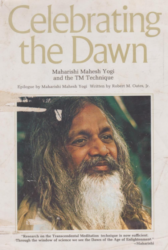Anxiety as a Way of Life?

Until recently I hadn’t known that there was more than one kind of anxiety, but there is.
It turns out that there is one measure of anxiety named state anxiety, which is related to specific instances, such as anxiety experienced before a dental exam or a date or a job interview.
Another kind of anxiety is the type one wakes up with in the morning. It is always there, underlying your experience, a characteristic of your daily life, a trait that is with you until you’re asleep at night. This is called trait anxiety. Trait anxiety is ingrained in a person’s personality. These individuals tend to worry more than most people do and may feel inappropriately threatened by their environment. Individuals with trait anxiety react in a debilitating, anxious manner. Frequent exposure to state anxiety may build into trait anxiety, which is a danger in our fast-paced, highly stimulating 24/7 modern society.
Reported incidents of anxiety indicate that 19 percent of the North American adult population from ages 18 to 54 experiences some anxiety disorder. The actual percentage might be higher because many conditions are undiagnosed and unreported. People often don’t recognize that they are experiencing anxiety, and instead are preoccupied with the symptoms of anxiety such as stomach aches, increased heart rate, and shortness of breath. People with trait anxiety do not often feel “normal” and are rarely without some types of anxious feelings.
Anxiety is actually a natural response for most people. It triggers a ‘fight or fight’ response system in our body that helps us to react quickly when facing danger, enabling us, for example, to jump out of the way of an oncoming car. The physiology of anxiety may ‘sharpen our wits’ enabling us to prepare for a big interview, exam or presentation. The flight or fight response is a good thing when it helps motivate you out of the path of a speeding car. But this response is inappropriate in its effect when the perceived danger is not real danger, such as in the case of being summoned to your boss’ office or of being called on in a classroom.
The intensity of the response may make you feel jittery, on edge and uncomfortable and may cause you to act outrageously. (You shouldn’t take a swing at your employer or teacher or run screaming from the room). These feelings might cause enough discomfort that they may inhibit you from living life fully—from doing new things or visiting new places or spending time with others.
Living with trait anxiety might be tolerable, but it is definitely debilitating and undermines one’s assessment and enjoyment of so much in life.
Here’s the good news:
A new study published in the Journal of Alternative and Complementary Medicine on October 9th, 2013, showed that the Transcendental Meditation technique significantly reduced trait anxiety for people with high anxiety.
The lead author on this meta-analysis, Dr. David Orme-Johnson, an independent research consultant, stated: “Groups with elevated anxiety received significant relief from TM, and that reduction occurred rapidly in the first few weeks of practice.”
TM was also found to produce significant improvements in other areas worsened by anxiety, such as blood pressure, insomnia, emotional numbness, family problems, employment status, and drug and alcohol abuse.
Co-author Dr. Vernon Barnes of the Georgia Prevention Center, Georgia Regents University in Augusta, Georgia explained, “Control groups who received usual treatment did not show dramatic reductions in anxiety. In fact, control groups that were highly anxious to begin with, if anything, tended to become more anxious over time.”
What happens in the brain during stress? The amygdala is the integrative center for emotions, emotional behavior, and motivation. It is very valuable in this area as it helps by activating the flight or fight response. However, it is abnormally activated in circumstances of prolonged or repeated stress. Its excessive activity triggers anxiety, anger and rage.
In contrast, during the TM practice, the state of restful alertness in the brain is exactly the opposite of what occurs with amygdala over-activity. Even those who have just learned the TM technique have EEG changes during TM, so a few weeks or months of practice can be expected to significantly reduce the negative impact of repeated exposure to stress.
Transcendental Meditation is a valuable resource for those who suffer from this incapacitating problem. Let’s not let anxiety be a way of life.
About the Author
Janet Hoffman is the executive director of TM for Women Professionals, a division of TM for Women in the USA





